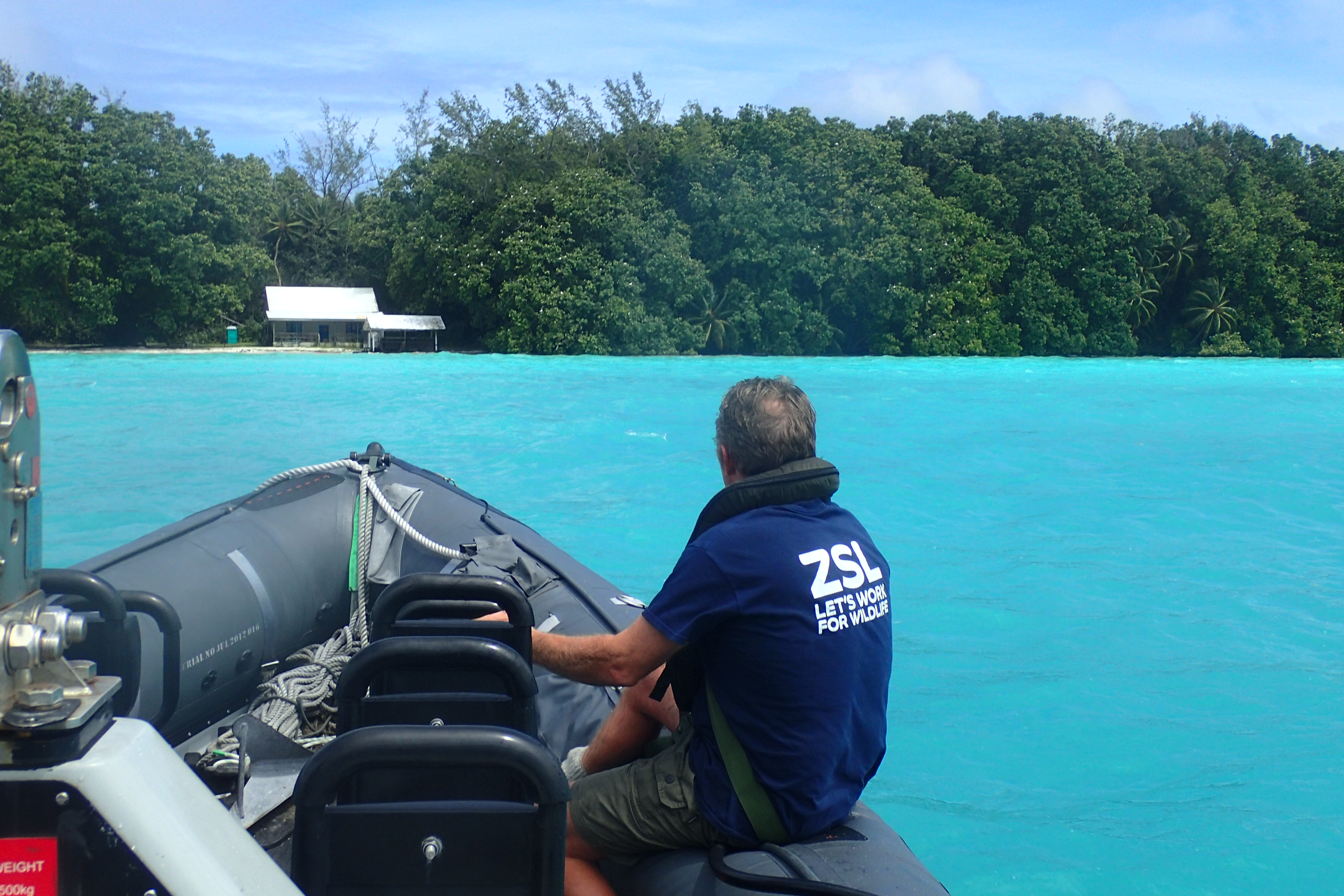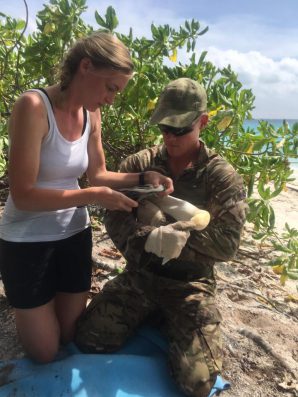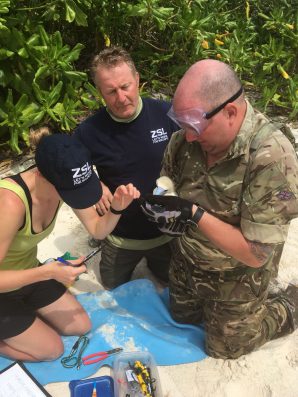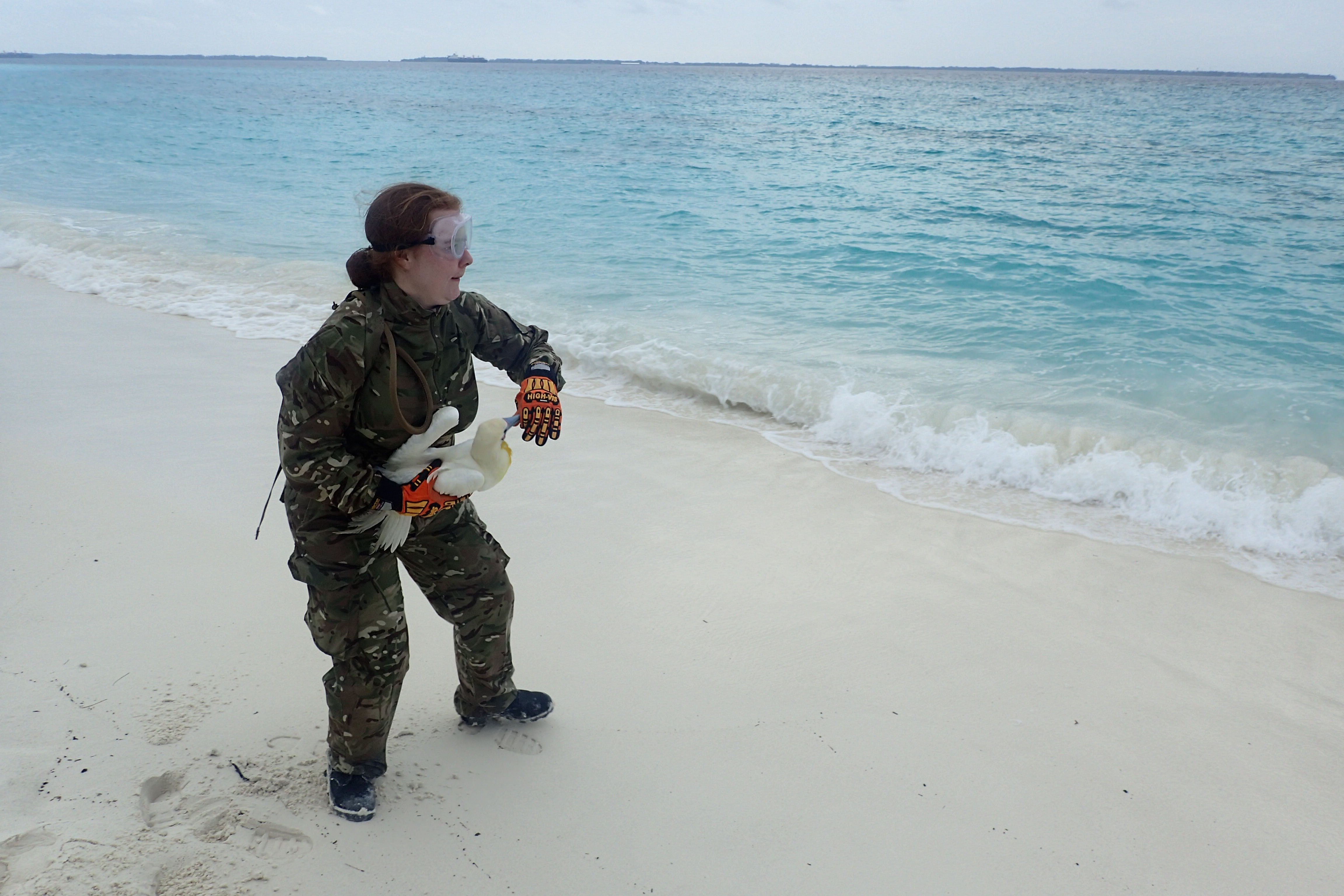1 Jan Seabird Ecology Exped
Download the full report here: Seabird Ecology on Diego Garcia.
Executive Summary
Two fieldworkers (Peter Carr & Hannah Wood) from ZSL/Exeter University visited Diego Garcia from 08 January to 07 February 2018 to conduct further seabird research as part of the Bertarelli Programme of Marine Science (BPMS) funded Chagos Archipelago Seabird Ecology project.

The primary objectives of the trip were to document the year round biology and foraging ecology of breeding Red-footed Boobies (RFB) at Barton Point Nature Reserve; to document the distribution of non-breeding RFBs from the colony on Diego Garcia and, to establish the status and distribution of breeding RFB on DG.
The research goals were all met. Sixty-two birds were processed, 38 of which were fitted with tracking equipment. Over 75 individual tracks of breeding birds feeding and foraging were downloaded from recovered birds. Forty-nine long-term tracking devices were fitted to birds as part of the research in to where RFBs feed and forage when not breeding. A full census of the RFB colony was undertaken resulting in a count of 5084 breeding pairs. This count is more than has ever been recorded in a calendar year. It is expected to rise by another 500-1000 breeding pairs when the colony is counted again in June/July 2018 when the second breeding spike of the year is monitored.
Throughout the tracking and colony census the team were joined by 29 volunteers.


In addition to the primary objectives two species new to the Territory were discovered by the team, Watercock (a bird) and Vagrant Emperor (a dragonfly).
Trials of communication and field equipment were conducted to inform future research trips to the Territory.

Outstanding support was provided by numerous personnel from BF BIOT without which the research would not have been so successful. Our sincere thanks are extended to our sponsors BPMS, BIOTA for permission to visit and permits, BF BIOT personnel especially Major Martyn Adams the Executive Officer and Harri Morrall the Environmental Officer. Finally special thanks to all of the volunteers who freely gave their time to assist.

